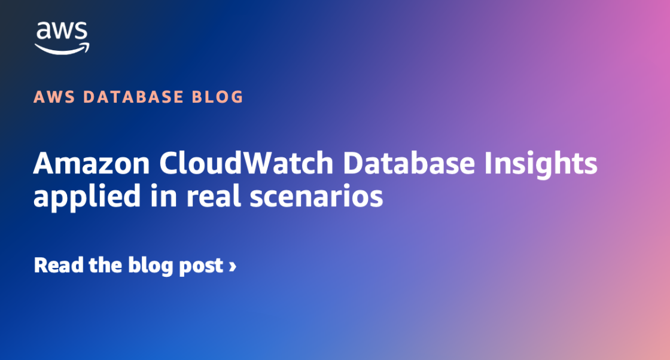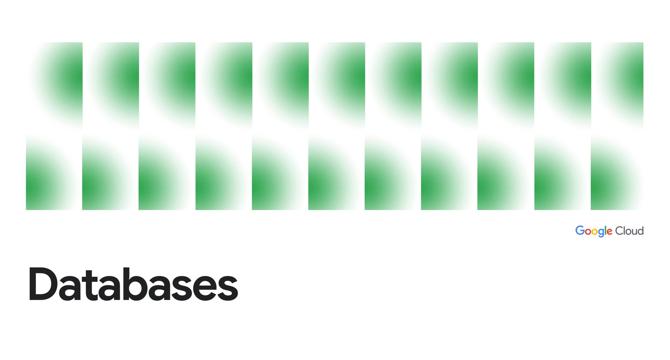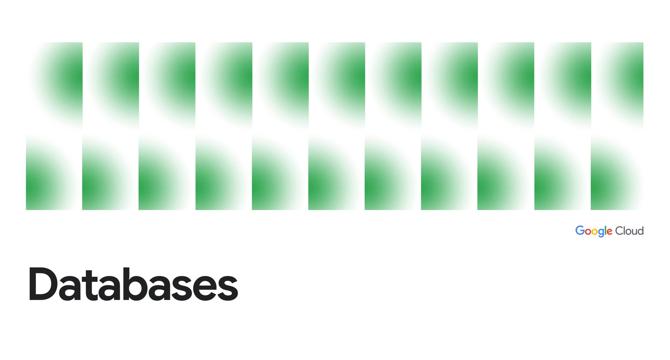Databases
Amazon
232

Image Credit: Amazon
Amazon CloudWatch Database Insights applied in real scenarios
- AWS introduced Amazon CloudWatch Database Insights in December 2024, tailored for Amazon Aurora and Amazon RDS across multiple databases.
- CloudWatch Database Insights aims to enhance database observability for DevOps engineers and database administrators, facilitating troubleshooting.
- The tool provides two modes of operation- Standard Mode and Advanced Mode, with Advanced Mode offering additional features.
- Enabling CloudWatch Database Insights involves activating the Advanced Mode, which incurs a cost.
- Accessing CloudWatch Database Insights through the Amazon CloudWatch console allows for efficient troubleshooting.
- Demo #1 showcases resolving a query performance issue by identifying the need for an index and optimizing the query execution plan.
- Demo #2 illustrates addressing storage capacity limits during database migration using CloudWatch Database Insights.
- Demo #3 exemplifies mitigating database restarts due to out-of-memory issues using instance size changes and failover.
- By leveraging CloudWatch Database Insights, users can effectively troubleshoot database issues and optimize performance.
- Authors include Nirupam Datta, Ryan Moore, and Cade Kettner, experts in AWS database services providing technical assistance and guidance.
Read Full Article
14 Likes
Cloudblog
105

Image Credit: Cloudblog
Cool stuff customers built, May edition: Visual scouts, racing agents, agile ads & more
- AI and cloud technology are transforming industries globally, as highlighted by customers utilizing Google Cloud for innovative projects.
- Notable projects include Lowe's Visual Scout product recommendation engine, Formula E's AI-powered Driver Agent for race insights, and Wealth.com's conversational tool Ester AI for financial planning.
- Additionally, Yassir consolidated its data infrastructure with Google Cloud, SIGNAL IDUNA enhanced customer service with an AI knowledge assistant, and Nuro improved AI-driven insights with AlloyDB.
- Mars Wrigley utilized BigQuery and Cortex Framework for agile media experiments, showcasing the impact of data-driven marketing strategies.
- These projects demonstrate how technology like AI, cloud computing, and data analytics are reshaping businesses and customer experiences across various industries.
- From enhancing ecommerce experiences to democratizing access to race insights, these initiatives showcase the diverse applications of cutting-edge technology.
- By leveraging Google Cloud services, companies are optimizing operations, improving customer satisfaction, and driving innovation in their respective sectors.
- These real-world examples underscore the importance of technology partnerships and the potential for AI to augment human expertise and decision-making in complex domains.
- As more industry leaders and startups embrace Google Cloud technologies, the impact on business processes, customer interactions, and data-driven insights is set to expand further.
- The showcased projects not only highlight the capabilities of Google Cloud but also emphasize the significance of data utilization and AI integration for driving business growth and operational efficiencies.
- Collaborations between companies and Google Cloud are enabling transformative projects that enhance user experiences, optimize processes, and propel technological advancements in various sectors.
Read Full Article
6 Likes
Cloudblog
39

Image Credit: Cloudblog
Democratizing database observability with AI-assisted troubleshooting
- Organizations are adopting DevOps practices, requiring application developers to manage databases without specialized expertise, leading to delays in development.
- Google Cloud introduced AI-assisted troubleshooting for Cloud SQL and AlloyDB, enabling developers to efficiently manage and troubleshoot databases.
- AI-assisted troubleshooting predicts and resolves potential database performance issues, provides actionable recommendations, and simplifies query optimization.
- This new feature leverages generative AI and machine learning to enhance database operations, address hotspots, and optimize performance, promoting independence and efficiency among developers.
Read Full Article
2 Likes
Dev
184

Image Credit: Dev
How to Retrieve Hierarchical Flex Values in Oracle EBS?
- Hierarchical queries in Oracle EBS help in understanding parent-child relationships within flex values for effective reporting.
- Using tables like FND_FLEX_VALUE_NORM_HIERARCHY and FND_FLEX_VALUE_CHILDREN_V aids in constructing queries for hierarchical data retrieval.
- Example query using FND_FLEX_VALUE_NORM_HIERARCHY showcases retrieving flex values with their hierarchy, displaying depth and paths.
- Alternatively, the query utilizing FND_FLEX_VALUE_CHILDREN_V simplifies hierarchy retrieval, but may not list top parents.
Read Full Article
11 Likes
Discover more
- Programming News
- Software News
- Web Design
- Devops News
- Open Source News
- Cloud News
- Product Management News
- Operating Systems News
- Agile Methodology News
- Computer Engineering
- Startup News
- Cryptocurrency News
- Technology News
- Blockchain News
- Data Science News
- AR News
- Apple News
- Cyber Security News
- Leadership News
- Gaming News
- Automobiles News
Dev
435

Image Credit: Dev
Getting Started with Simple Data Integrator (SDI): Direct Connection Setup
- Simple Data Integrator (SDI) is a no-code ETL tool for connecting and transferring data between databases and systems.
- This article provides a guide on setting up a Direct Connection in SDI, using Oracle as an example.
- Steps include opening Connection Settings, filling in Connection Details like Oracle details, and testing the connection.
- SDI supports connections to various databases like SQL Server, MySQL, PostgreSQL, DB2, and ODBC-compliant databases with similar setup procedures.
Read Full Article
26 Likes
Dev
171

Image Credit: Dev
10 SQL Anti-Patterns You Must Avoid in Production
- SQL developers and data engineers often prioritize functionality over query quality, leading to various issues like long response times and poor scalability.
- Key SQL anti-patterns include N+1 Query Pattern, Wildcard Index Scans, Implicit Data Type Conversions, Scalar Subqueries in SELECT, and SELECT * in Production.
- Solutions involve optimizing queries by using joins, avoiding leading wildcards in LIKE statements, matching data types explicitly, and selecting only necessary columns.
- Other tips include using WHERE clauses in DELETE/UPDATE statements, adding indexes on foreign keys, and correctly utilizing UNION ALL instead of overusing OR.
Read Full Article
10 Likes
Dev
382

Image Credit: Dev
Working with JSON in PostgreSQL, MySQL & SQL Server
- SQL databases now support semi-structured data such as JSON alongside traditional relational models.
- The hybrid approach allows for storing rich nested data, adapting to evolving schemas, and joining structured and flexible data together.
- Key points covered are JSON column types, querying nested structures, indexing for performance, and cross-database examples in PostgreSQL, MySQL, and SQL Server.
- The article emphasizes the benefits of using JSON in SQL databases for various use cases such as dynamic user profiles, event logs, IoT sensor payloads, and more.
Read Full Article
23 Likes
Dev
307

Image Credit: Dev
Querying the Past: Temporal Tables in SQL Server and PostgreSQL
- SQL Server and PostgreSQL offer temporal tables for tracking changes over time, essential for compliance, historical reporting, and debugging.
- Temporal tables allow querying data as it was in the past without custom history-tracking logic.
- SQL Server uses system-versioned tables while PostgreSQL requires triggers and audit tables for temporal features.
- Best practices include maintaining a temporal schema, logging changes, querying past states, and following data governance practices for tracking history.
Read Full Article
18 Likes
Dev
189

Image Credit: Dev
How to use EXPLAIN to fix slow queries in MySQL
- EXPLAIN in MySQL is a helpful tool for diagnosing and optimizing slow queries that can impact performance.
- By using EXPLAIN before a query, developers and administrators can understand the execution plan and identify underperforming areas.
- The output of EXPLAIN can be in table format or structured JSON for more detailed information.
- Key aspects to consider when interpreting EXPLAIN results include query structure, access methods, index usage, row scanning, and unnecessary work.
- EXPLAIN helps in diagnosing performance issues like full scans, unused indexes due to pattern matching, inefficient joins, sorting, and filtering problems.
- Additional tools like MySQL Workbench, Percona Toolkit, EverSQL, and Releem can complement EXPLAIN for query analysis and optimization.
- By leveraging EXPLAIN and other tools, developers can streamline the process of identifying and resolving inefficiencies in MySQL queries.
- Using EXPLAIN regularly can aid in improving database performance, optimizing queries, and enhancing overall system efficiency.
- Be proactive in incorporating EXPLAIN into your MySQL toolkit to effectively manage databases and build high-performing queries.
- Understanding and utilizing EXPLAIN effectively can lead to significant performance enhancements and better database management.
- Empower yourself with the knowledge and tools provided by EXPLAIN to tackle slow query issues and optimize MySQL database operations.
Read Full Article
11 Likes
Cloudblog
17

Image Credit: Cloudblog
Multi-cloud AI made easier: Aiven for AlloyDB Omni now generally available
- Aiven for AlloyDB Omni is now generally available, providing a fully managed, high-performance PostgreSQL-compatible solution for building modern, data-driven applications.
- Key benefits of Aiven for AlloyDB Omni include strong uptime SLA across major clouds, a consistent multi-cloud experience, marketplace availability, disaster recovery options, superior price/performance, and flexible licensing.
- The solution seamlessly integrates with Aiven's unified data platform, offering tools to accelerate AI initiatives, reduce management overhead, scale without limits, and streamline data pipelines.
- AlloyDB Omni delivers PostgreSQL compatibility, faster transactional workloads, accelerated analytical queries, and improved vector search operations, now available as a managed service across AWS, Azure, and Google Cloud.
Read Full Article
1 Like
Dbi-Services
422

Image Credit: Dbi-Services
M-Files IMPACT Global Conference 2025 – Day 3
- The M-Files IMPACT Global Conference 2025 on its last day was exclusive for M-Files partners where partner-specific information and updates were shared.
- Keynote session highlighted continued support for the partner network and shared financial results for partners in 2024 and Q1 2025, focusing on networking and learning.
- Sessions on best practices for impactful demos, implementing M-Files Hubshare, and new M-Files Admin features were conducted to enhance partner capabilities.
- The conference concluded with sessions on Partner Cloud updates, developer tools, and emphasized the importance of the partner network for future collaboration.
Read Full Article
25 Likes
Dev
325

Image Credit: Dev
EXPLAIN It! Your Fast Track to Fixing Slow SQL
- The "EXPLAIN" command in SQL provides insights into query execution strategies, aiding in optimizing slow queries.
- It reveals details such as indexes used, table join order, scanning methods, and more.
- By analyzing the output of EXPLAIN, you can identify inefficiencies in queries and take steps to improve them.
- Two case studies are presented to illustrate how EXPLAIN can guide SQL optimization efforts.
- In Case Study 1, optimizing a simple count query involves checking indexes and ensuring efficient data retrieval.
- In Case Study 2, optimizing a multi-table join and aggregation query requires early filtering and appropriate indexing.
- Combining EXPLAIN analysis with practical optimization techniques can enhance query performance.
- Tools like Chat2DB offer AI-powered database assistance to streamline SQL optimization processes.
- Chat2DB provides features like query generation, optimization suggestions, EXPLAIN execution, and seamless database management.
- These tools empower users to enhance database efficiency and write better-performing SQL queries.
Read Full Article
19 Likes
Dev
264

Image Credit: Dev
Aggregate according to Time Interval — From SQL to SPL #27
- A database table stores time-series data with intervals of several seconds between each record.
- Task is to group and aggregate data every minute, summarizing data for 5 minutes each time.
- SQL implementation requires nested subqueries and multiple window functions, making the code complex.
- SPL provides direct access syntax for positions, making the code more streamlined and efficient.
Read Full Article
15 Likes
Dev
268

Image Credit: Dev
Why Snowflake Column-Level Masking Outshines Traditional Tokenizationi9
- Traditional tokenization is facing limitations in modern data platforms like Snowflake, leading organizations to consider column-level masking for improved security and flexibility.
- Tokenization alters data at rest and requires external systems, slowing down analytics and lacking flexibility. It's suitable for specific compliance needs but may hinder general analytics.
- Snowflake's column-level masking offers a cleaner alternative by dynamically changing data visibility based on user roles without permanently altering the original data.
- Comparing tokenization and column-level masking in Snowflake shows that the latter provides better data usability, access control, and performance with lower maintenance and higher flexibility.
Read Full Article
16 Likes
Dev
414

Image Credit: Dev
How to Perform Row-Wise Aggregation in DuckDB Using SQL?
- Performing row-wise aggregation in DuckDB using SQL involves filtering and aggregating data from multiple tables based on specific criteria.
- You can achieve row-wise aggregation by joining the CDI table with the Population table and applying dynamic filters for each row in the CDI table.
- The SQL query utilizes JOIN and filter conditions to aggregate population data according to the criteria specified in each row of the CDI table.
- Executing the query in DuckDB allows you to efficiently aggregate population data based on different filters for each row in the CDI table, providing valuable insights for data analysis.
Read Full Article
24 Likes
For uninterrupted reading, download the app